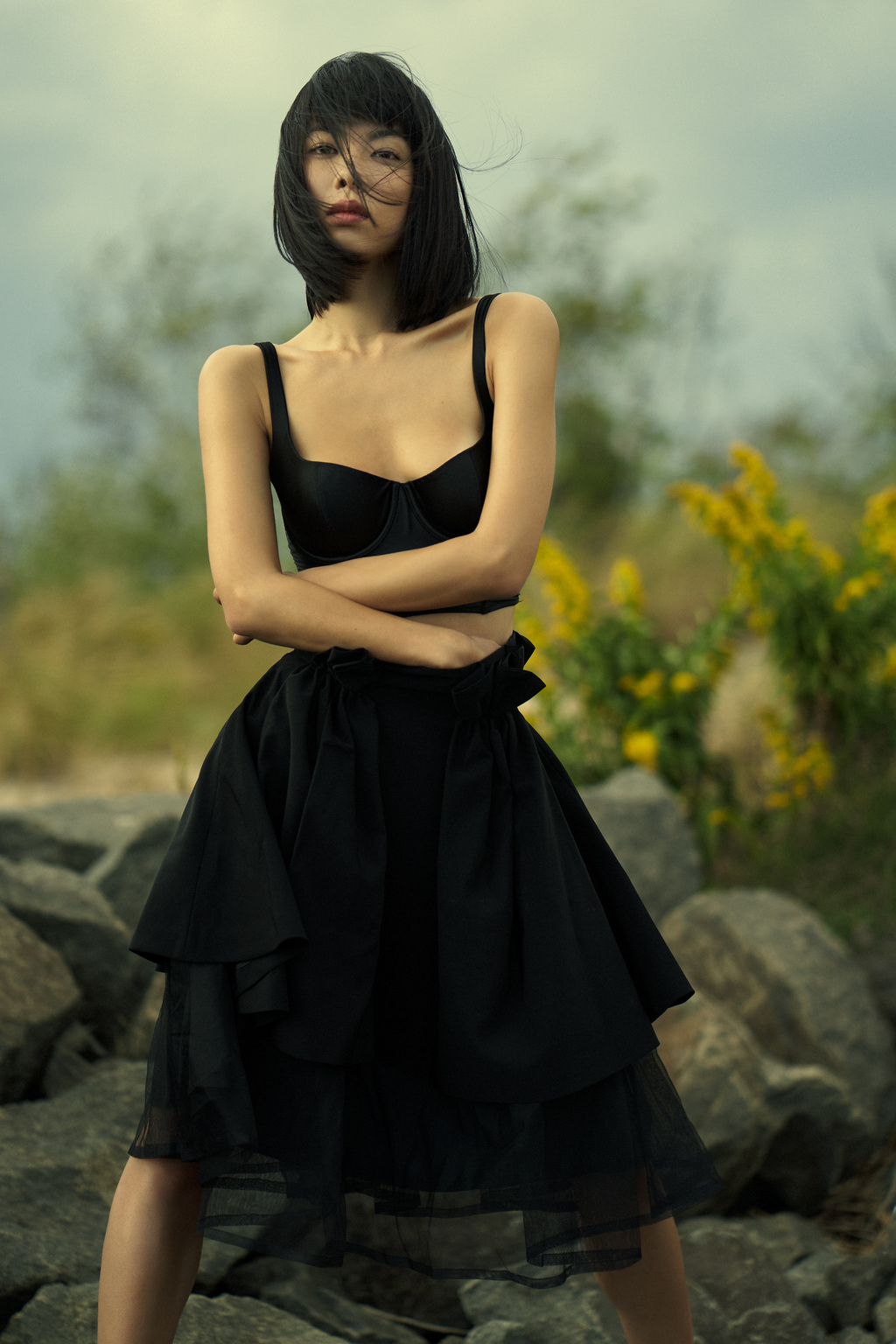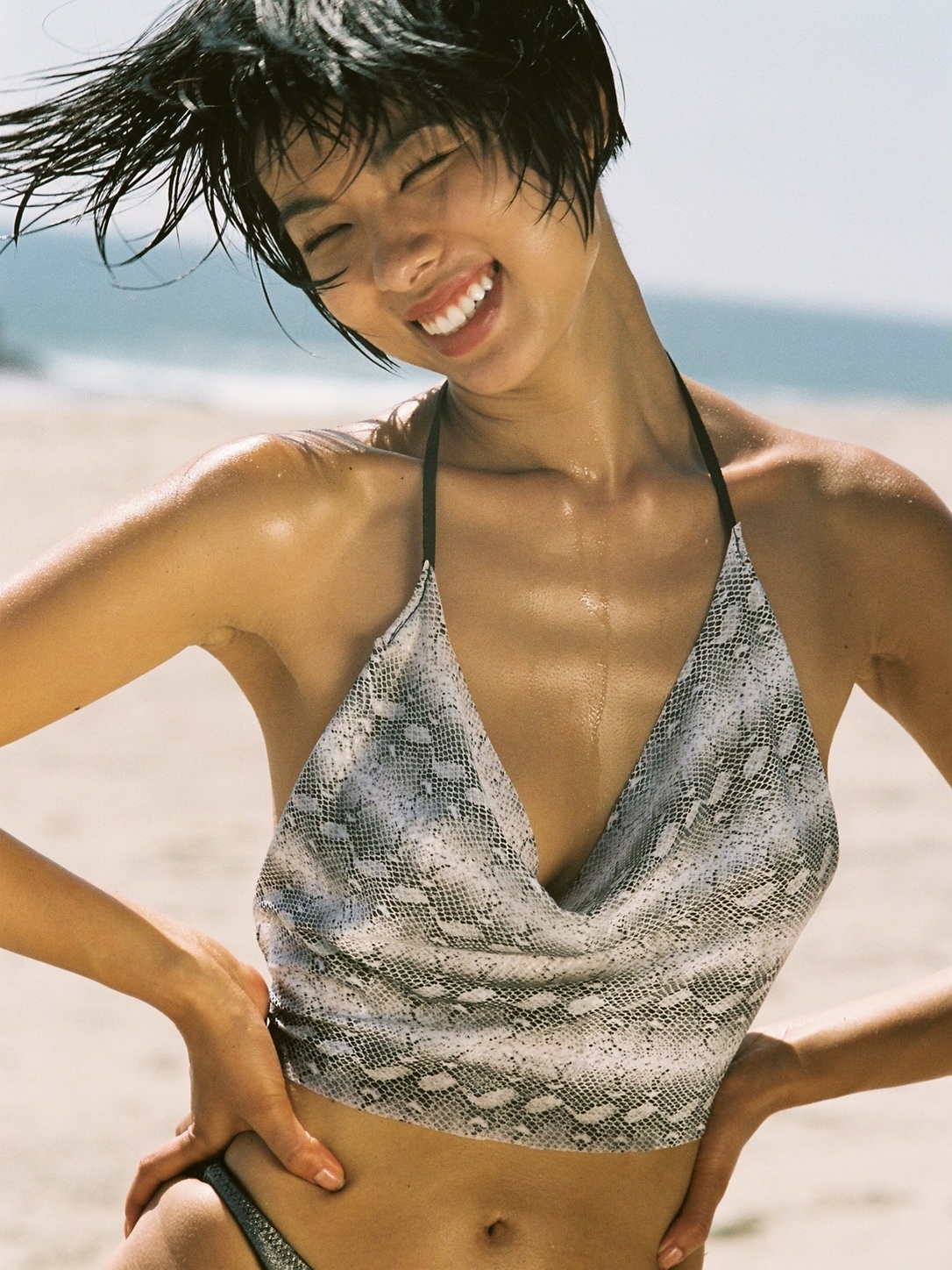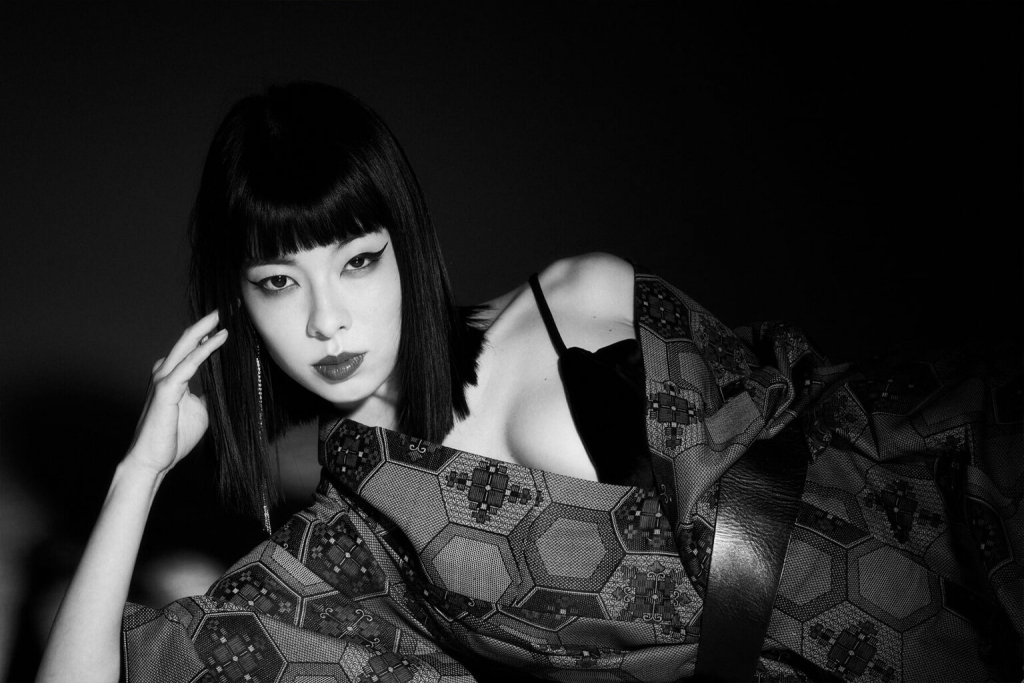The TW March 2022 cover model, Masumi Yamada, has been making a name for herself in the modeling industry since her debut when she was a high school student. Having spent time living in New York and also residing in Tokyo, the Chiba-native discusses her modeling experiences and life as an artist in two of the world’s biggest and most vibrant cities.
You wore Noir Kei Ninomiya for the TW cover shoot. What was the shoot like? And what do you think of Kei Ninomiya’s work?
Everybody during the cover shoot was very professional and they kept me on my toes, but at the same time, it was so much fun and memorable. It was truly an honor to wear Noir Kei Ninomiya for the TW cover shoot. It was always a dream of mine to be in an incredible magazine like TW, and to be on the cover is a dream come true for me!
I have been a big admirer of Kei Ninomiya’s work and it is truly mesmerizing to see the work he has done for Comme des Garçons. I remember like it was yesterday when I bought a Kei Ninomiya black skirt. At the time, it was an expensive purchase for me but I was so determined to get it at Saks Fifth Avenue. Fast forward to now, to be able to work with him and wear his clothes blows my mind, and I certainly take a lot of pride and joy to wear his work.
How did you become involved in modeling?
I became involved in modeling during my teenage years. Modeling was always my dream and I wanted to do whatever it took to actualize that dream. I was scouted by many agencies, but I also applied to more than 80 myself. After multiple interviews, I ultimately decided to sign with a big agency in Tokyo.

What were your first impressions of modeling in Tokyo and what kind of jobs did you do?
Modeling in the beginning was very entertaining. I modeled for TV commercials, catalogs and magazines. However, I gradually started to see some harsh realities of the job. Over time, my manager started to criticize my appearance and asked me to lose weight or even change my body appearance. On top of that, as I attended more castings, I was quickly dismissed because of how I looked. I didn’t even get the chance to speak. Experiences like these were so shocking to me and it was very hard to take at times. I was naive and cluelessly confident when I entered the modeling world. I felt like I was Wonder Woman, a woman that faced no fears. However, my inner Wonder Woman was gradually losing confidence and the joyful energy that I had started to fade away.
You have lived in New York for a long time now. Why did you move there?
I initially moved to New York in 2014 because I wanted to learn English and I wanted to escape from Japan to start a new chapter in my life. I was overwhelmed by the modeling environment I was in and I really needed somewhere else to breathe. At the time, I was a big fan of Gossip Girl and the famous runways hosted in New York City, such as the Victoria Secret’s Fashion Show, and I was so drawn into living there. I always had the curiosity to further study English and I figured moving to New York would be the perfect opportunity for me.
What are the main differences between modeling in Tokyo and New York?
I would say modeling in Tokyo (especially when I started in my teens) centered around being kawaii. On the other hand, modeling in New York did not necessarily center around a theme or concept. You can proudly express your identity, sexuality, the values you feel that are important to you, the way you were born and your natural body. You are empowered to express yourself proudly and freely. In New York, it was so beautiful to see all kinds of models ranging from plus-size and albino models to LGBTQ models.
There are various kinds of modeling work. Catalog, runway, ad campaigns and so on. Which do you enjoy the most and why?
I enjoy modeling for art and beauty editorials. I especially enjoy being part of these editorials because your body is used as an artistic platform. Makeup artists express their ideas on your face and body and I certainly take a lot of pride exhibiting those ideas. I seek pure joy when I am used as a medium to express something. I love to embody artistic expression and see the creative evolution.
Can you describe what a normal day in a model’s life is like?
I do not have any particular routines before my casting and shooting. I used to be more conscious of what I ate. In fact, when I started my career, I used to control my diet two weeks in advance. Now, I have learned so many other ways to maintain my appearance without going through the hurdles of restricting your diet. I love working out and going to the sauna during my free time, which has enabled me to maintain my appearance.

How would you describe modeling in New York as a Japanese woman?
From Black Lives Matter to Stop Asian Hate, I was living in New York at such an interesting time. I would say that these movements created a more inclusive environment and taught people to appreciate, respect and promote diversity. With that being said, I would say Japanese women have more opportunities to flourish in the modeling industry in New York.
You’re also a calligraphy artist. When did you start doing calligraphy and why are you attracted to that as an art form?
I started doing calligraphy from the age of three, believe it or not. I attended a calligraphy school in my local neighborhood. I basically started calligraphy before I can even remember. I was curiously drawn into the beauty of traditional Japanese calligraphy. From perfecting every stroke to even learning the history of the kanji. I’m basically obsessed with calligraphy.
I started to become attracted to calligraphy as an art form during my time in New York. I used to visit many galleries in Chelsea and the Lower East Side, as well as looking at graffiti on the walls and streets of my neighborhood in Brooklyn. It inspired me to think about how calligraphy can be expressed as an art form.
When I am working on my calligraphy art, I tend to listen to sad music and cry to channel my inner nirvana. This turns on my creative engine and makes me feel much more comfortable making art. For me, calligraphy is an artistic expression but also a way to meditate. I find myself meditating as I stroke my brush. During the lockdown of Covid-19, I felt so much at ease as I meditated through writing calligraphy.
What do you like doing when you have a day off in Tokyo and New York?
In Tokyo, I enjoy spending time with my family. When I am in New York, I enjoy gallery hopping, jazz concerts, coffee shops and trying different kinds of cuisine.

What do you think are the differences between New York and Tokyo?
Both cities are similar and yet different. I think both cities certainly exhibit that dynamic cosmopolitan energy in every street you turn. However, the difference is the diversity. I would say that New York embodies the melting pot. You have every nationality and race from every corner of the world. I was very inspired as I met so many people from different countries and cultural backgrounds in New York. When I moved there I, perhaps strangely, didn’t know that I was being identified as Asian. Before New York, I had never even thought about my ethnicity because I had never met so many diverse and international people in my life.
Are there any fashion labels in Tokyo that you like and would recommend to TW readers?
Of course, I love Kei Ninomiya and Rei Kawakubo’s work for Commes des Garçons. I have been saying this for years. They are innovative and inspiring Japanese designers that are spearheading the fashion industry. They continue to create their own aesthetic by experimenting with garments and designing elegant work in an avant-garde style. I am also a big fan of Kansai Yamamoto (who passed away in 2020). I was blown away when I first saw my favorite model, Sayoko Yamaguchi, model for his brand. Lastly, I love Tomo Koizumi. His hand-sewn, ruffled dresses made from polyester are so unconventional and original. He is also from my home prefecture, Chiba, and seeing him become a globally recognized fashion designer is so inspiring.









